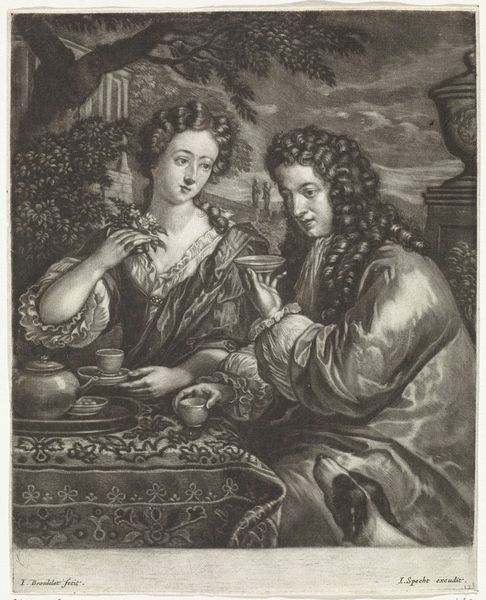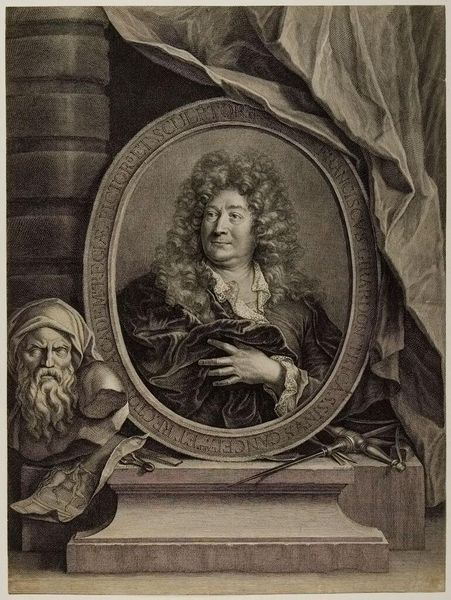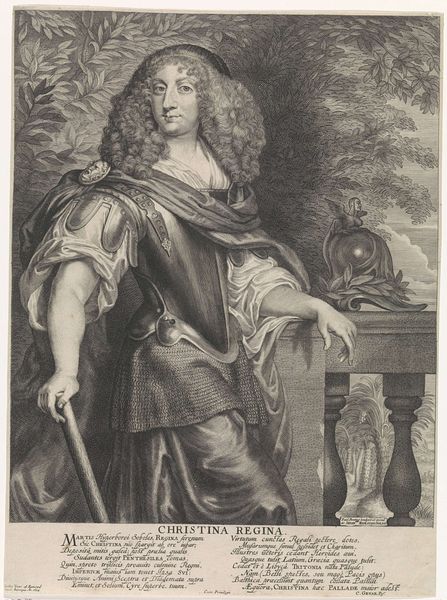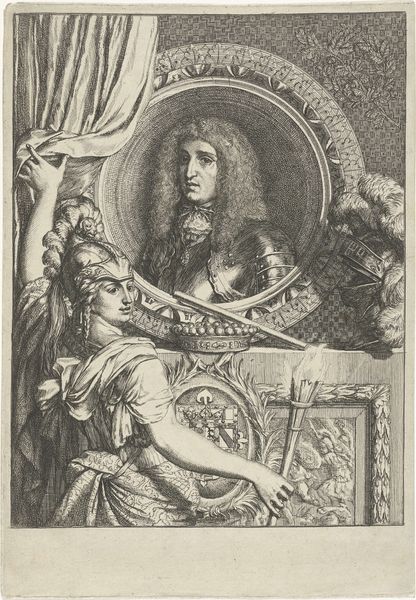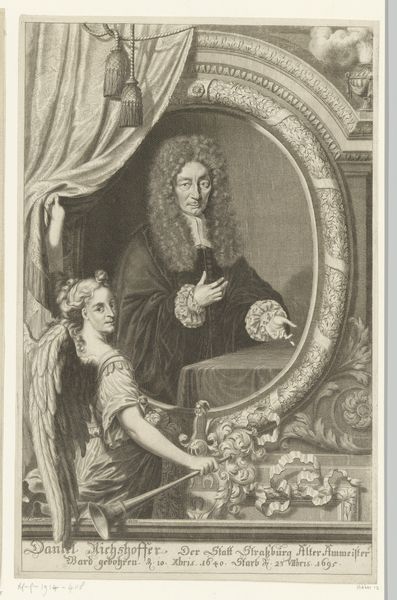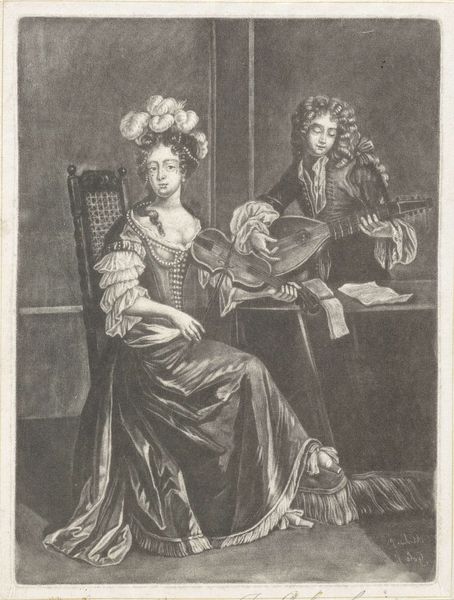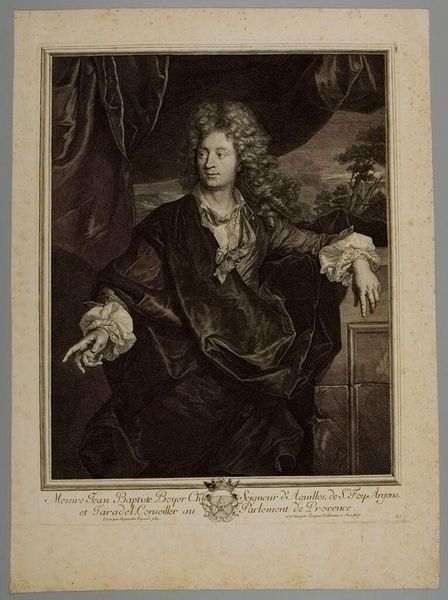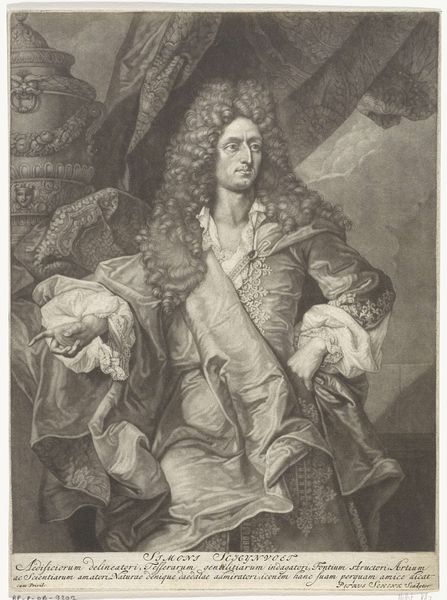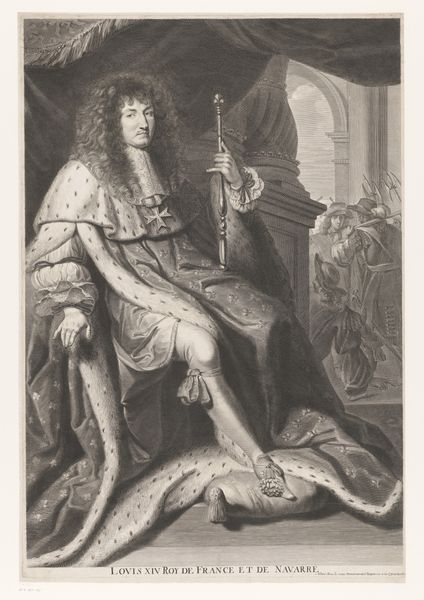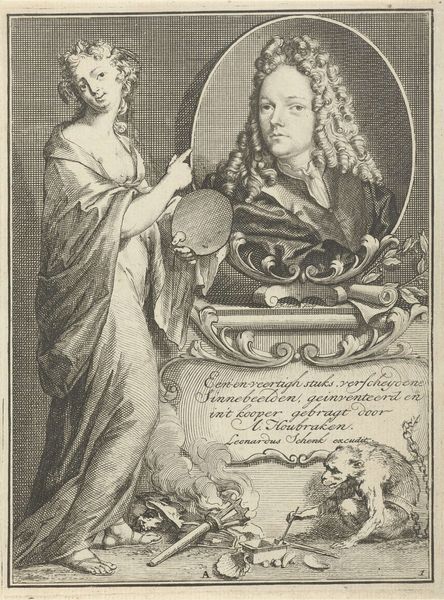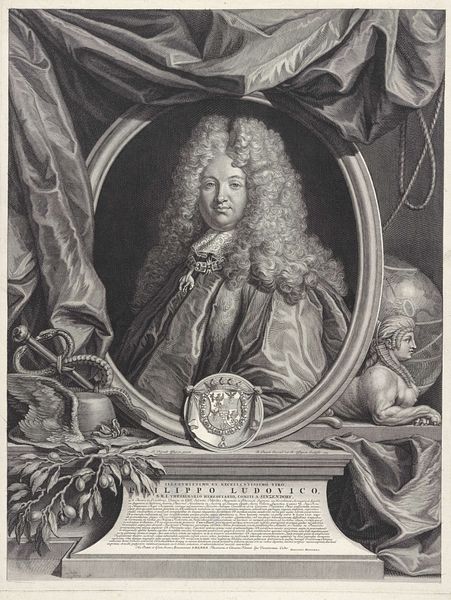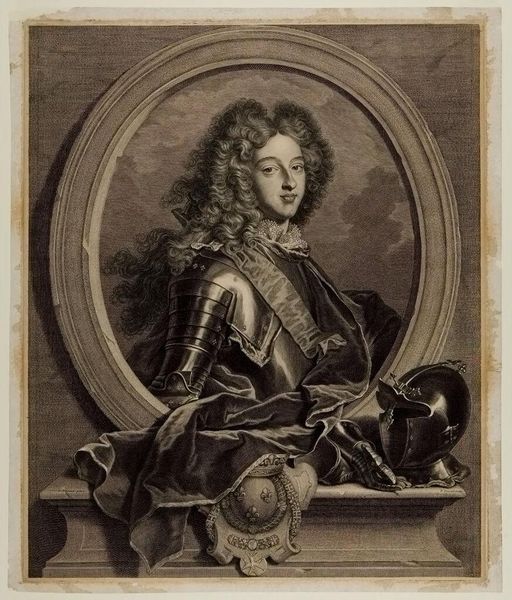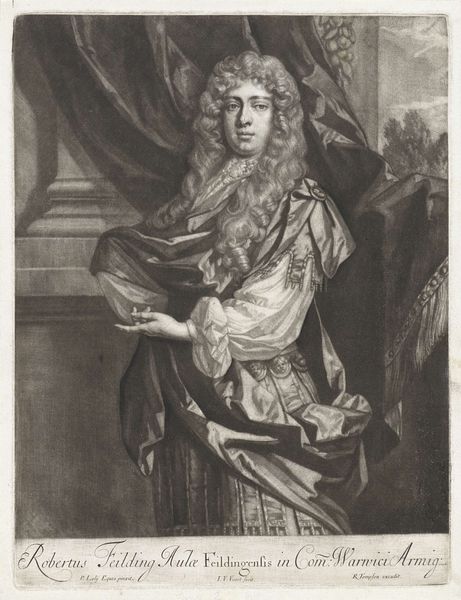
intaglio, engraving
#
portrait
#
baroque
#
book
#
intaglio
#
portrait reference
#
limited contrast and shading
#
portrait drawing
#
genre-painting
#
engraving
#
erotic-art
Dimensions: height 340 mm, width 253 mm
Copyright: Rijks Museum: Open Domain
Editor: This is Pieter Schenk’s “Portrait of a Man with a Prostitute,” created sometime between 1670 and 1713 using engraving. It's a rather stark depiction, the subjects are bathed in light while the background remains shadowy. How do you interpret this work, particularly given its rather…provocative title? Curator: It's crucial to acknowledge the loaded nature of that title. It immediately frames the woman in the portrait in a way that speaks volumes about the social hierarchies of the time, doesn't it? How does seeing this through a gendered lens change our understanding? Editor: I see your point. The title seems to solidify a power dynamic before we even consider the image itself. Curator: Exactly. The man's pose exudes a kind of confident power, the sword at his side a phallic symbol perhaps? But look at her averted gaze. Do you see a complicity in the staging of the female body here, in the objectification of it through a male perspective? Editor: I do. It makes me wonder about the role of the artist, Schenk. Was he critiquing this dynamic, or perpetuating it? Curator: It’s in that tension that the work gains its contemporary resonance, doesn't it? This portrait reveals not just individual identities, but the broader structural forces at play—gender, class, and the ways in which power manifests through visual representation. How does it resonate with our contemporary conversations about representation? Editor: It definitely prompts questions about who has the power to name and define others, and how those definitions can be limiting and harmful. I never would have considered that reading the title was my first engagement with the artwork, so thanks! Curator: And it’s a crucial point, to continuously unpack the historical narratives that frame our interpretations, especially when those narratives involve marginalized figures. It keeps us interrogating, pushing for more inclusive understandings.
Comments
rijksmuseum over 2 years ago
⋮
This work clearly follows the adjacent painting. But is it actually a portrait of Beverland? The sitter’s face is clearly different. And what happened to the pipe? The Beverland look-alike is holding a tastevin (winetasting cup) and a wine pipette, the attributes of a wine connoisseur. Is this man trying to impress the lovely lady with his knowledge of wine?
Join the conversation
Join millions of artists and users on Artera today and experience the ultimate creative platform.
